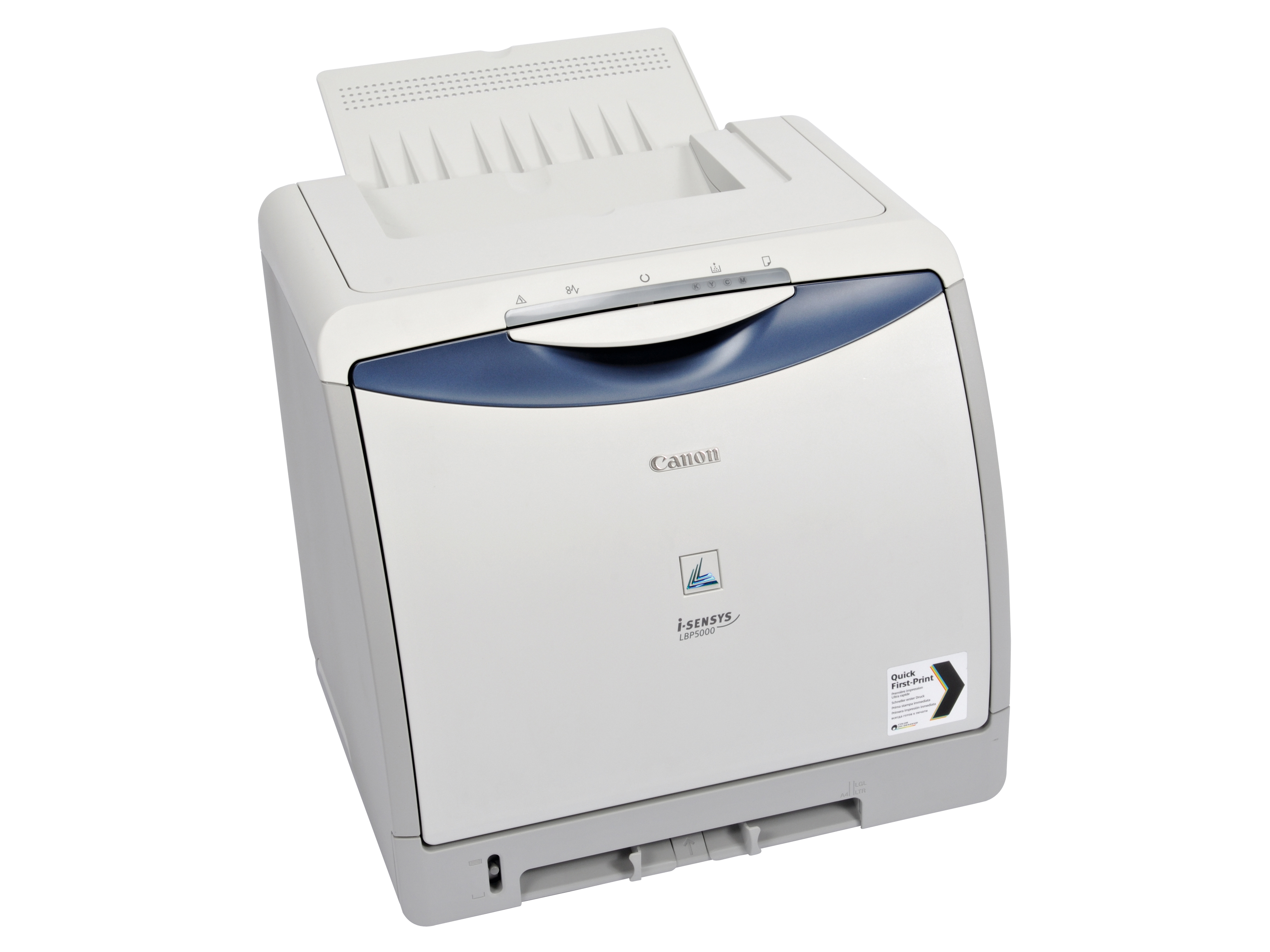TechRadar Verdict
Quick and easy to set up and use
Pros
- +
Simple to set up
Great value for money
Quiet in operation
Cons
- -
Occasional flaws with colour prints
Why you can trust TechRadar
Everything about the Laser Shot LBP-5000 screams simplicity.
With a modest footprint and easily inserted toner cartridges, which are based on a vertically stacked, inline system rather than relying on a carousel, the printer is ready to run almost as soon as it's out of the box.
Software installation is equally painless and straightforward, leading on to one Canon's typically logical and intuitive printer drivers. The whole set-up procedure only takes about five minutes from start to finish.
With little more than a single power on/off switch and neat row of indicator lamps across the top panel, there are few frills to distract from the business of bashing out page after page of mono or colour output.
At feeding time, the single paper input tray slides out from the bottom of the printer, accommodating up to 250 sheets of standard A4 paper. There's also a manual, single sheet feed slot for specialist paper or envelopes. Back at the main paper tray, a simple mechanical indicator shows how many sheets are left at a glance.
The printer comes with 8MB of memory that you can't add to, but in our tests this proved sufficient for outputting full A4 photos based on 6MP, 6MB image file sizes. Canon claims that its CAPT (Canon Advanced Printing Technology) and Smart Compression Architecture enables superior processing speeds and higher print quality within these memory constraints - claims that were borne out in our tests.
Why wait?
The LBP-5000 uses Colour On-Demand Fixing Technology, which equates to remarkably short warm-up times for the fuser unit. This, even after the printer has been left on standby for half and hour or more. Printing speed itself is pretty good with 8ppm mono or colour for document printing.
The all-important first page print times proved about average in our tests, with 22 seconds for both mono text and colour DTP document pages and about 27 seconds for full-page colour photos. Another bonus, especially for home or small office use, is that the Canon is refreshingly quiet, not only in standby mode but when it's printing at its maximum speed.
Despite a modest purchase price the toner costs are very reasonable, at 1.7p per mono page and 6.9p for colour, based on the usual five per cent coverage. This is more impressive than it might seem at first glance, because imaging drums are built into the toner cartridges so they're replaced with every cartridge change, rather than requiring an expensive imaging unit replacement after 20,000 or so prints.
While the printer is pretty basic in its standard trim, you can add optional extras later on if you need them. These include a second, 250-sheet input tray and an Ethernet networking board, which cost around £70 and £110, respectively.
For print quality, crisp mono output was more than matched by high-quality colour thanks to Canon's typical attention to accurate colour rendition. The only flaw in our review sample was that colour prints sometimes tended to look slightly streaky, particularly evident in blue skies printed from our test photos.
Tech.co.uk was the former name of TechRadar.com. Its staff were at the forefront of the digital publishing revolution, and spearheaded the move to bring consumer technology journalism to its natural home – online. Many of the current TechRadar staff started life a Tech.co.uk staff writer, covering everything from the emerging smartphone market to the evolving market of personal computers. Think of it as the building blocks of the TechRadar you love today.
